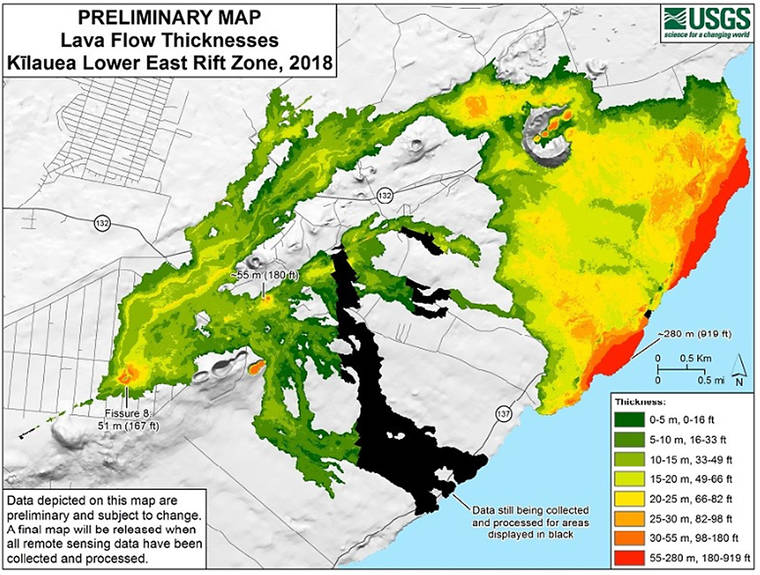Two years after the start of the Kilauea eruption in lower Puna, lava from the eruption is still estimated to be only half-cooled.
Although the surface of the lava that buried much of lower Puna is safe to walk on, it surrounds cores of lava that, in some cases, are hot enough to still be liquid.
Carolyn Parcheta, a geologist with the U.S. Geological Survey’s Hawaiian Volcano Observatory, said the cooled lava at the exterior, which is most exposed to cooler air and rain, has insulated deeper areas of the lava flow, keeping some rock at extremely high temperatures for years.
Based on the average thickness of the lava delta — about 25 meters — Parcheta said it is likely that liquid lava, or lava higher than approximately 1,500 degrees Fahrenheit, still exists in places beneath the delta’s surface.
“If you were to cut the lava delta open and remove a piece of it, the lava inside would be liquid enough to flow to the ocean,” Parcheta said.
HVO models estimate that, based on the lava flows’ thickness and the amount of rainfall they receive, flows could take three to four years to cool below the boiling point of water.
In other words, “we’re about halfway there,” Parcheta said.
The presence of the lava could present complications for the possibility of reopening or redeveloping certain parts of lower Puna — road crews encountered lava rock temperatures of up to 800 degrees when working to reopen the lava-inundated Highway 132.
The next inundated road to be reopened by the county will be Pohoiki Road, which is covered by flows between 10 meters to 20 meters thick.
Unfortunately, Parcheta said, there is no feasible way to accelerate the cooling process. On the other hand, she added, the lava doesn’t pose any significant risk in its current state.
“Nothing’s pressurizing the lava, so if you drilled a hole down there, it wouldn’t come gushing out,” Parcheta said. “The lava’s not going to burst through the delta or anything like that.”
Email Michael Brestovansky at mbrestovansky@hawaiitribune-herald.com.






